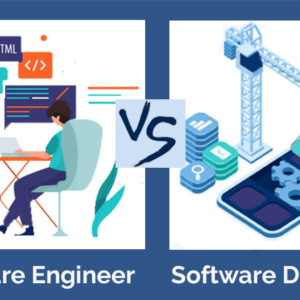Chances are, you’re holding a chip-powered device in your hand right now. Your phone. Maybe your smartwatch. Even that key fob in your pocket. It’s all run by circuits packed into silicon.
But who builds those chips? Not just manufacturers. Not just coders. It’s people trained in VLSI and chip design courses, and they’re behind almost everything digital we have and experience.
Now, if you’ve ever thought about this career, you’ve probably wondered what the job involves. Do you sit at a desk coding circuits? Do you need to be a math genius? Will you end up in a lab with a microscope?
Because these courses don’t just train you to understand chips. They teach you how to crate them. And if you’re someone who enjoys solving hard problems, catching flaws before they cause chaos, and making systems work better, this field is for you.
Basics of VLSI and chip design courses
VLSI stands for Very-Large-Scale Integration. Sounds complex, but the idea is simple. It’s the process of packing millions of transistors onto a single chip. Those tiny switches turn logic into a real-world function. Every app you open, every swipe, every image your device loads, all run through those circuits.
That’s also where VLSI and chip design courses come in. You’ll start with core concepts: digital electronics, circuit theory, and logical flow. Think gates, truth tables, and timing paths. It may sound complex, but once you grasp how logic comes to life in silicon, you will get a better idea.
You’ll also learn how electricity behaves at the microscopic level. Why voltage drops matter. How resistance can throw off an entire design. And how to write instructions that a chip can follow without making mistakes.
What You’ll Do in VLSI and chip design courses
Most strong VLSI and chip design courses are nicely curated. You’ll go from basics to hands-on work fairly quickly. You’ll learn to write in Verilog or VHDL—these are hardware description languages. Not like regular programming languages. They don’t just run software. They define hardware behavior.
You’ll build small logic blocks first. Then you’ll simulate them. You’ll change one parameter, rerun the test, and study the waveform that comes back. You’ll see what works.
Later on, you’ll dive into EDA tools—software used in the chip design industry. You might work with Synopsys, Cadence, or Xilinx. These tools let you test designs before they’re ever sent to a factory.
By the end of a serious course, you won’t just “know about” chips. You’ll have designed, built, tested, and debugged them. You’ll understand what makes them work and what makes them fail.
Why Practice Matters in the Course?
You can’t learn this work just by reading. Knowing how a chip works in theory is one thing. Making it work under real conditions? That’s something else entirely.
The debugging process teaches you to think differently. You start noticing small delays, glitches, and signal misfires. You start asking better questions. Why did that edge come late? Why does the simulation behave differently than expected? What’s the pulling current on this line?
That’s where the real skill shows up. Not in memorizing flowcharts, but in fixing problems when the flow falls apart.
Career Paths After the Course
Once you finish your course, the job titles you might see won’t always be the same. But the roles are often similar. You might apply for positions like:
- Digital design engineer
- ASIC verification engineer
- FPGA developer
- Physical design engineer
- DFT (Design for Test) specialist
Each position focuses on a different part of the chip lifecycle. Some roles emphasize design. Others center on testing and verification. Some deal with the physical placement of transistors. Others specialize in checking logic under different scenarios. You’ll find opportunities in startups, global semiconductor companies, design firms, and even government labs. The skills are in demand everywhere.
What to Look for Before You Choose a Course?
Not all VLSI and chip design courses deliver what they promise. Before you enroll in any training, ask a few key questions:
- Does the course use current EDA tools?
- Will you get access to simulation and synthesis labs?
- Are the faculty members industry-experienced?
- Do you get to work on real, full-cycle projects?
- Is placement support available, or do they at least connect you to hiring managers?
If the answers to those are vague or missing, look elsewhere. You need actual training. Also, talk to someone who’s taken the course. Ask what they learned, how they were evaluated, and what happened after they finished. Their experience will tell you more than a website ever will.
Final Thoughts
Designing chips is about building something that works. And then building something better. The work is detailed. The hours can stretch. But the payoff is real. You’ll understand how systems behave, how circuits respond, and how a simple signal can change everything downstream. If that sounds like you, there’s space in this field and it’s waiting.





